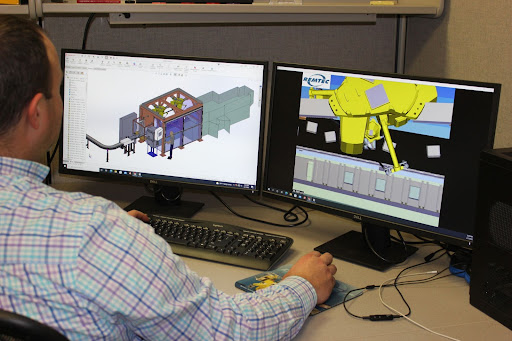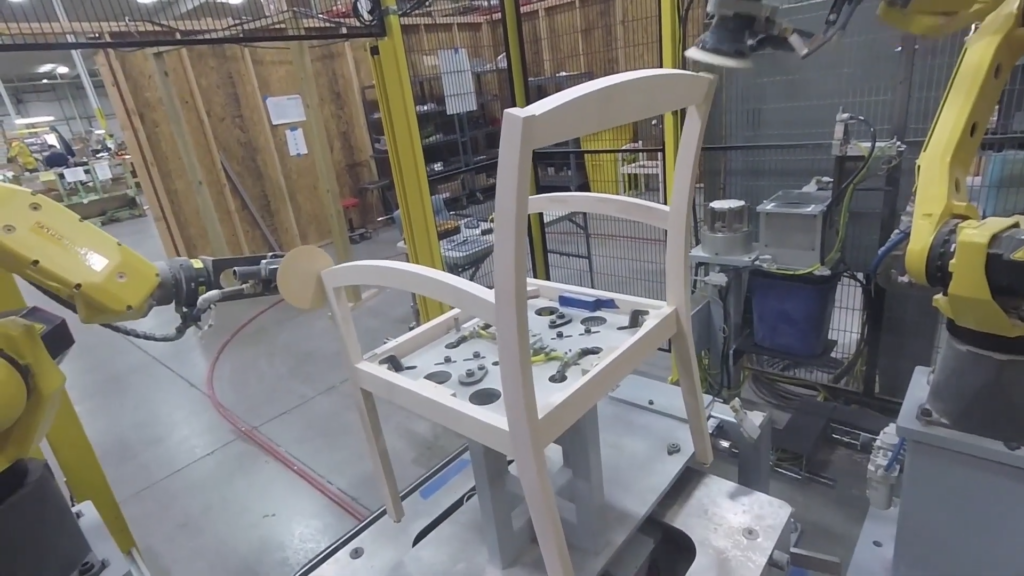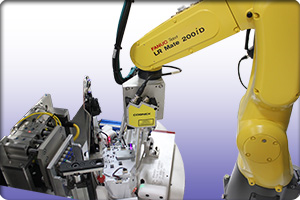Understanding Digital Twinning and Simulation in Robotics
The successful application of robotic automation has led to a host of benefits, from improved quality and efficiency, to greater productivity and profitability in a wide range of industries, including manufacturing, logistics, healthcare, agriculture, food processing, and more. As the Internet of Things (IoT) expands and technical innovation continues, robotic automation will find even more applications.
Simulation and digital twinning are examples of technologies that are advancing robotic capabilities by improving the development process of robots and robotic systems. In this post, we will take a closer look at these technologies.

What is Simulation?
Simulations are digital models using computer-aided design software applications often used across industry to test products, systems, processes, and concepts. They are typically used during the design phase and created in 3D to dynamically replicate parts of a process or product. The simulation operates by introducing and testing different variables into the digital environment or interface to assess results.
What is Digital Twinning?
Digital twinning is a technology that involves the creation of a digital replica or twin of something physical, such as a robot or a process. The digital twin is a real-time virtual representation that mirrors the original system. The twin includes detailed information about the original robotic system’s real time performance. Digital twins can be used to optimize the robotic system payload handling and paths based on data collected from internal monitoring of the robot’s system parameters.
How Simulation and Digital Twinning Work Together
Both simulation and digital twinning involve the use of computer models to mimic the behavior of a robot, however the concepts differ. Digital twinning creates a virtual environment capable of studying several simulations. Real-time data and a two-way flow of information between the twin and data collecting sensors back-up the digital twin, thereby increasing the accuracy of predictive analytical models. Together, digital twinning and simulations offer a more comprehensive understanding for designing, managing and monitoring products, processes, and procedures.
Benefits of Digital Twinning and Simulation in Robotics
The use of digital twinning and simulation has been extremely beneficial for the development of robots. The following are examples of the advantages gained by using these design strategies:
Reduced Development Costs – Building physical prototypes of robotic systems can be costly and time-consuming. Digital twinning and simulation allow engineers to test and refine designs without significantly increasing development costs.
Get to “Production Ready” More Quickly – Since design variations can be tested at a quicker pace, robotic system developers can bring their products to the manufacturing floor faster, allowing the end user to achieve their ROI sooner.
Improved Performance – Simulations allow engineers to fine-tune a robot’s operation and performance in a variety of environments and scenarios. This allows for robots that are more efficient and reliable.
Optimized Safety – Simulating dangerous or complex tasks in a virtual environment can help identify potential risks and safety concerns. This helps developers to ensure that robots operate safely in real-world situations.
Remote Monitoring and Maintenance – Digital twins provide real-time data about the condition and performance of robots in the field. This information can be used for remote monitoring, predictive maintenance, and troubleshooting.
Applications of Digital Twinning and Simulation in Robotics
Digital twinning and simulation are used in the development of robots for a broad range of applications spanning a variety of industries. Some examples include:
- Manufacturing – Digital twinning allows manufacturers to simulate new product model types, identify problems, and improve efficiency before physical implementation.
- End of Line Packaging – Digital twinning can be used to optimize robot paths and speeds with payload identification and motion enhancement, increasing system throughput.
- Agriculture – Autonomous agricultural robots can be tested in various process application conditions through simulation, helping to optimize production and reduce resource usage.
- Logistics and Warehousing – Simulation is used to optimize the navigation and operation of robotic warehouses and distribution centers, improving order fulfillment and reducing costs.
Remtec is Your Source for Leading Robotic Technologies
Digital twinning and simulation are revolutionizing the field of robotics by providing a powerful tool for design, testing, and operation. These tools are driving innovation and accelerating the adoption of robots in various industries. As robotics continues to evolve, you can rely on Remtec as your knowledgeable and experienced partner for robotic integration. Contact us to discuss your project.


